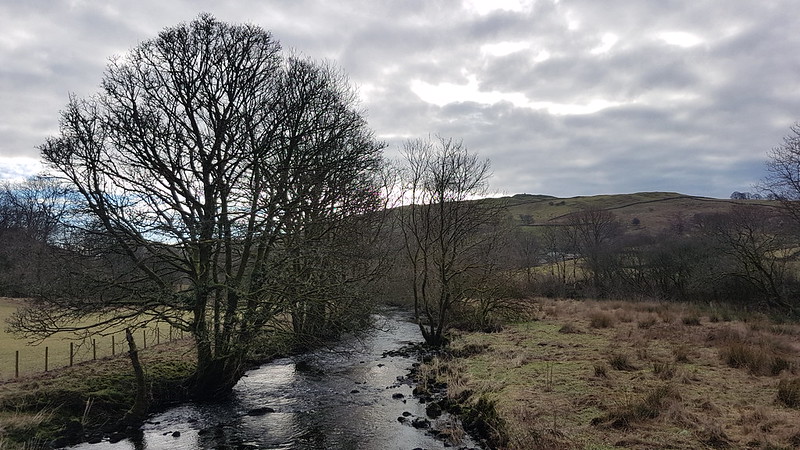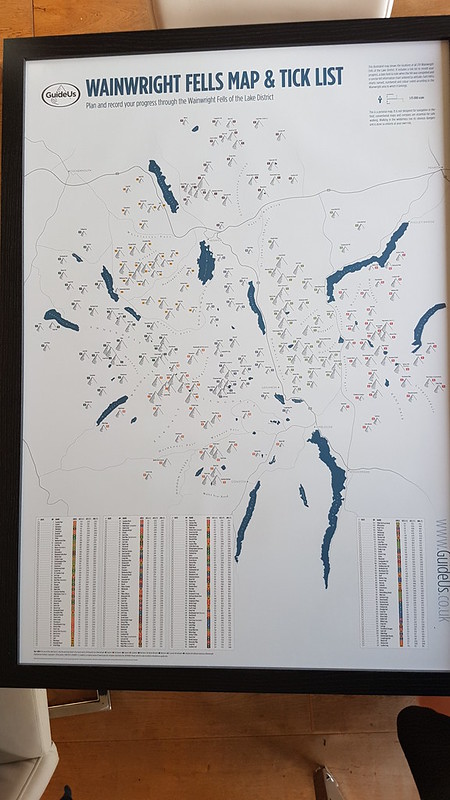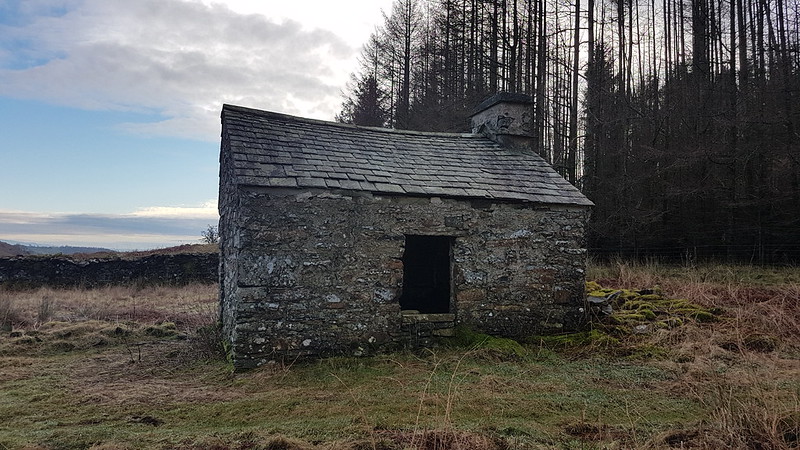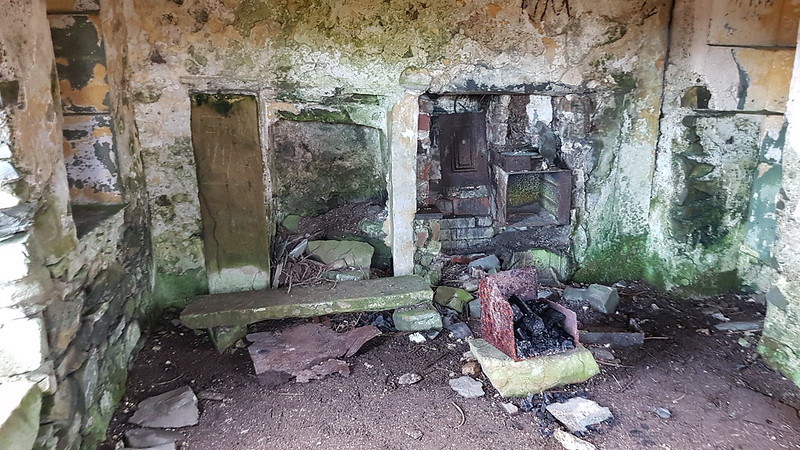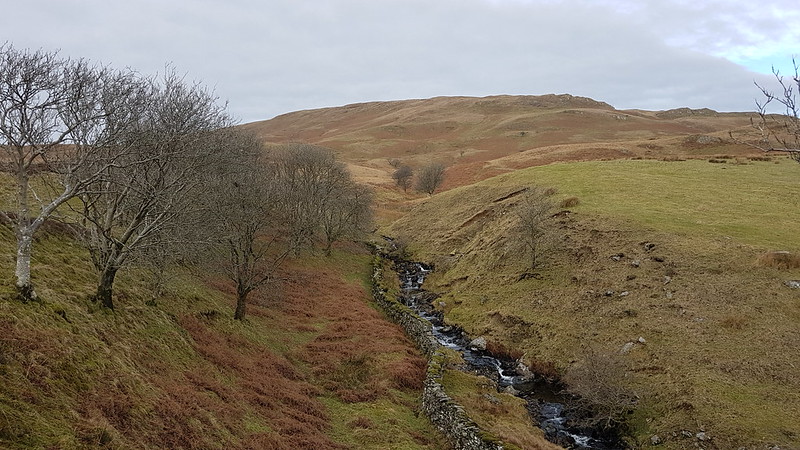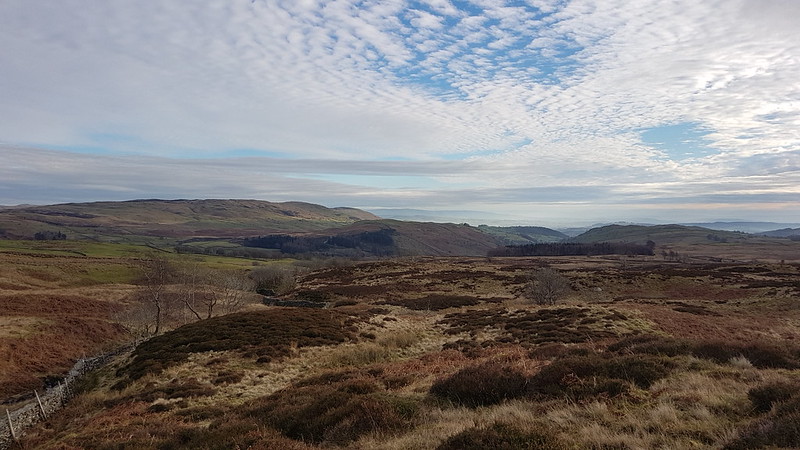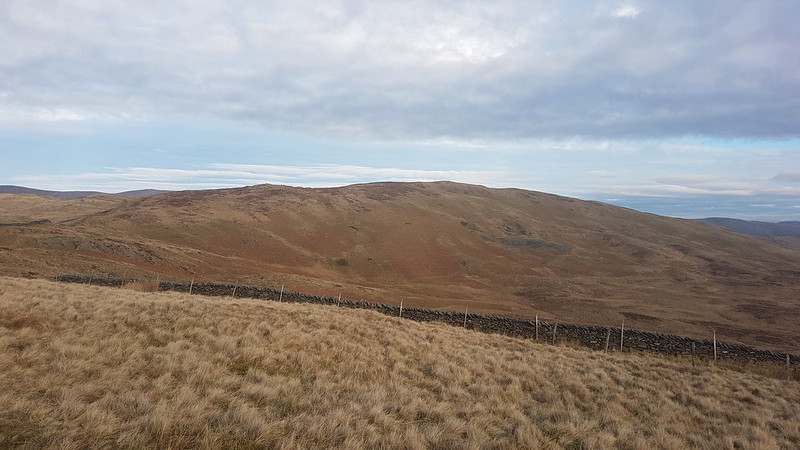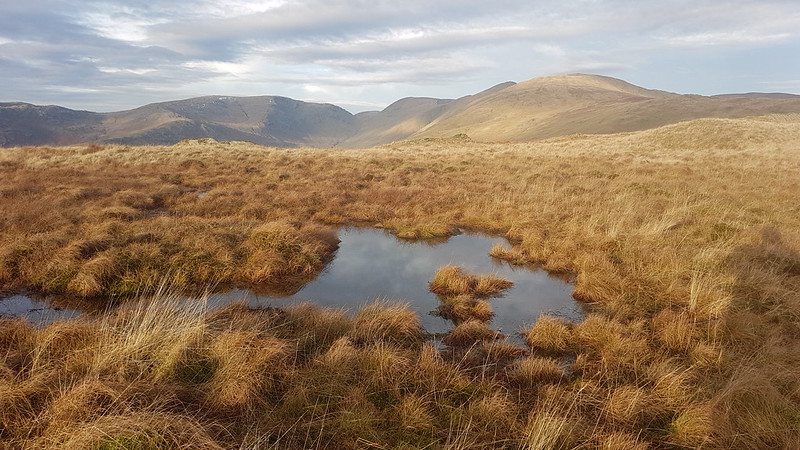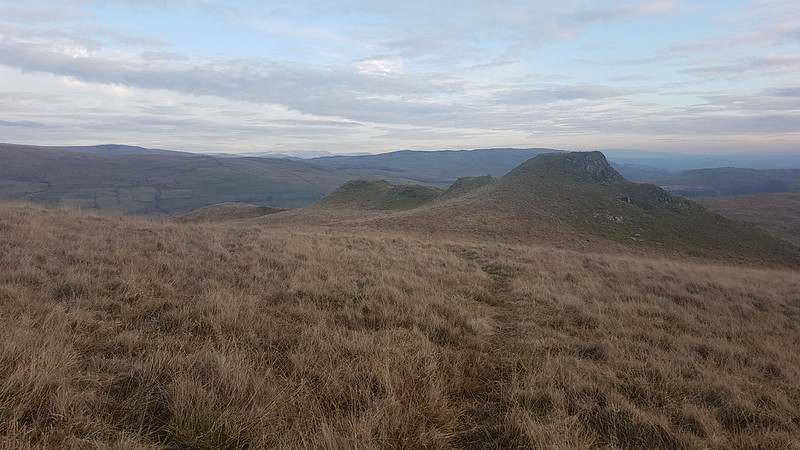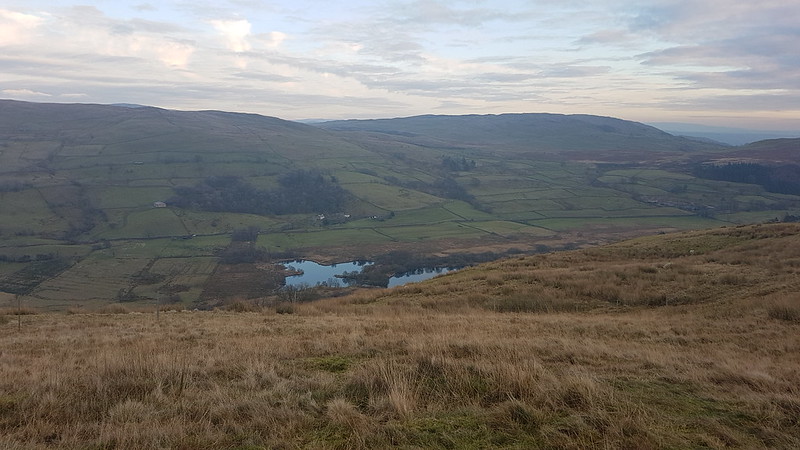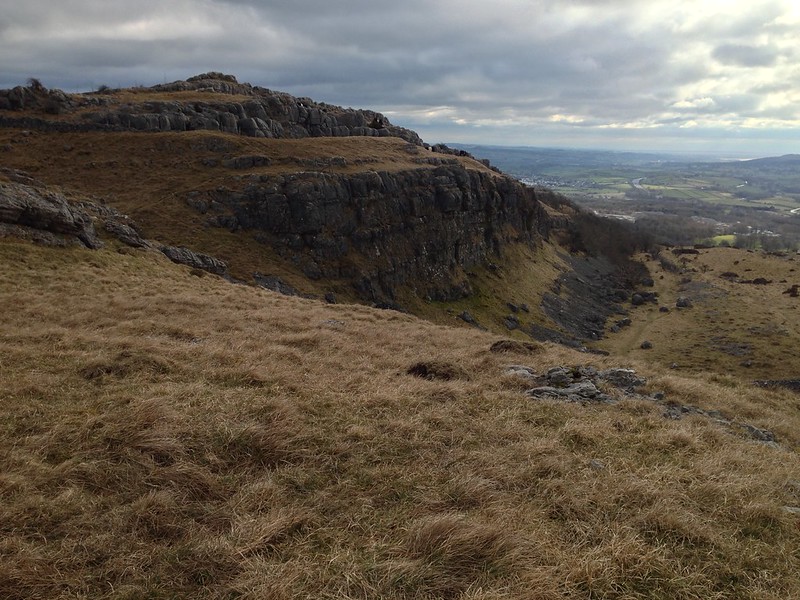
“Digressions, incontestably, are the sunshine; they are the life, the soul of reading…”
Laurence Sterne quoted in I Put a Spell on You by John Burnside.
Some years ago now, I went to a meeting of the Mourholme Local History Society. I’ve only ever attended two of the meetings, one on the Silverdale Hoard and the other on maps of the area, and I enjoyed them both enormously, I really should make the effort to go again. Anyway, during the talk on maps I learned that on some early maps, before the concept of contours had been hit upon, hills were pictorially depicted, with the size of the picture presumably reflecting the perceived height of the hill in question.
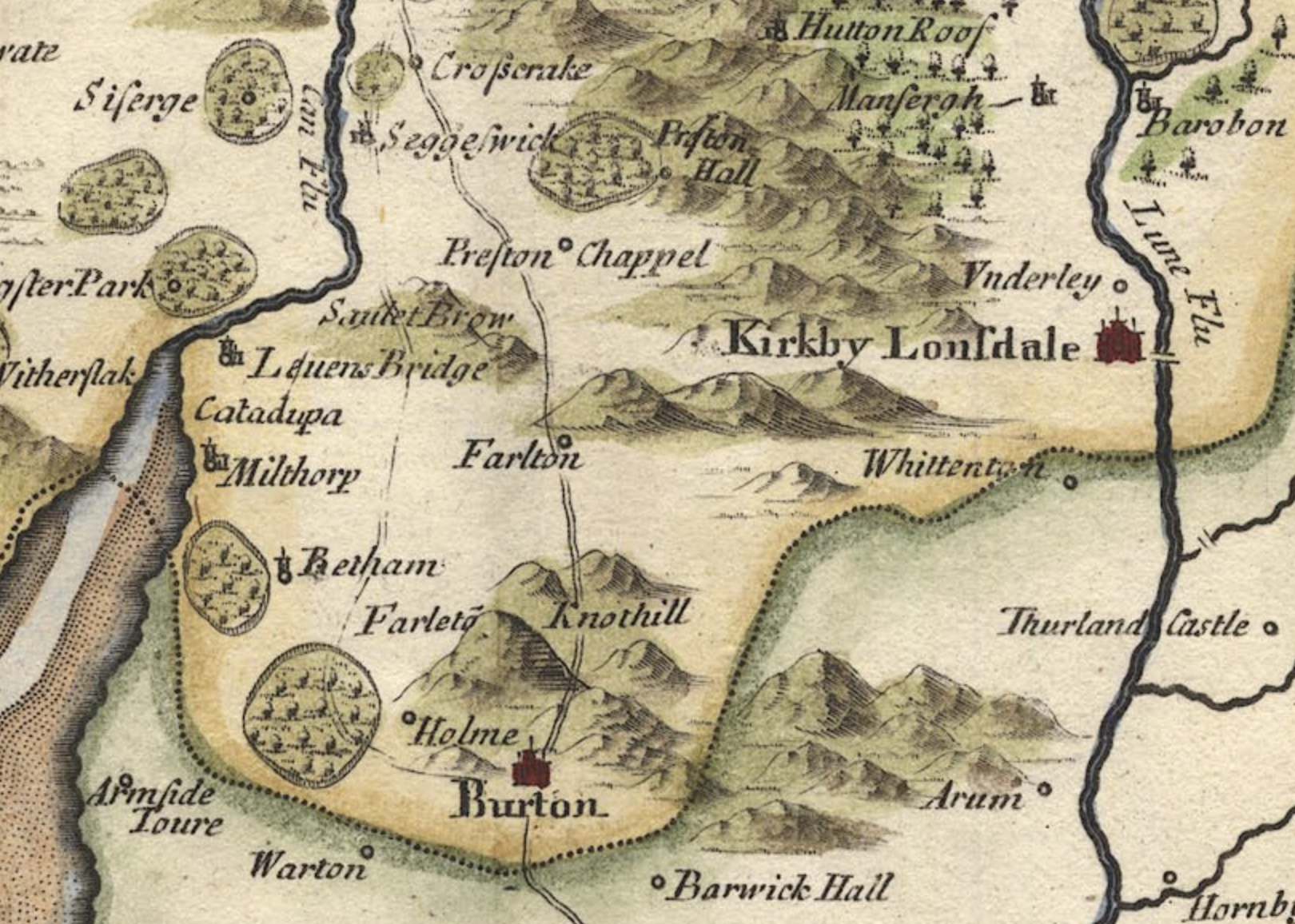
On Robert Morden’s map of Westmorland and Cumberland (1695), Farleto Knothill is one of the biggest hills, not just locally, but on the entire map. Oddly, it’s shown on the west side of the coach road through Burton, now the A6070, when it’s actually to the east. Since Morden relied on information sent by ‘Gentlemen of the County’, rather than carrying out surveys, these errors are perhaps not all that surprising. I assume that the prominence given to Farleto Knothill was precisely because it loomed over the coach road, dominating the view of travellers and appearing to be much larger than it actually is.
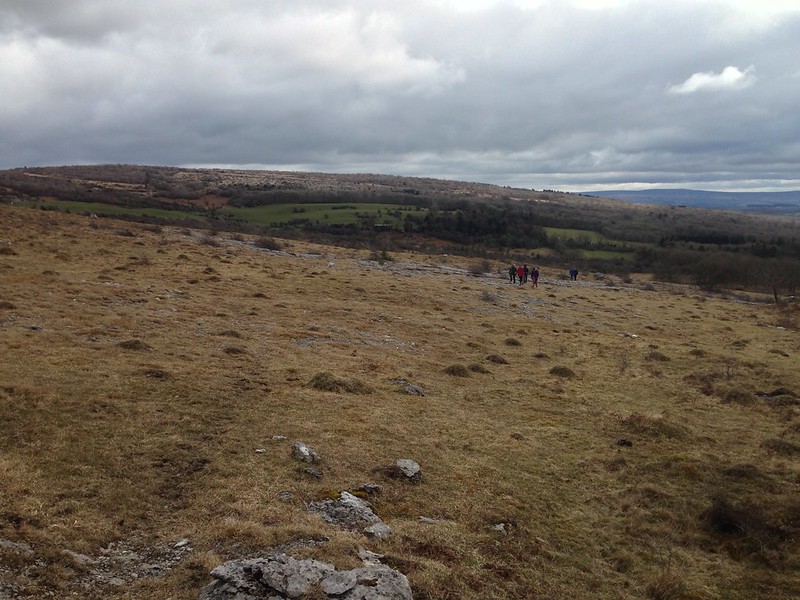
These days it also looms over Junction 36 of the M6, the South Lakes turn, and has become a very familiar landmark to visitors who drive up to the Lake District from the South. Andy had often mentioned that he had never climbed Farleton Fell, although he has frequently driven past it. Time to put that right.
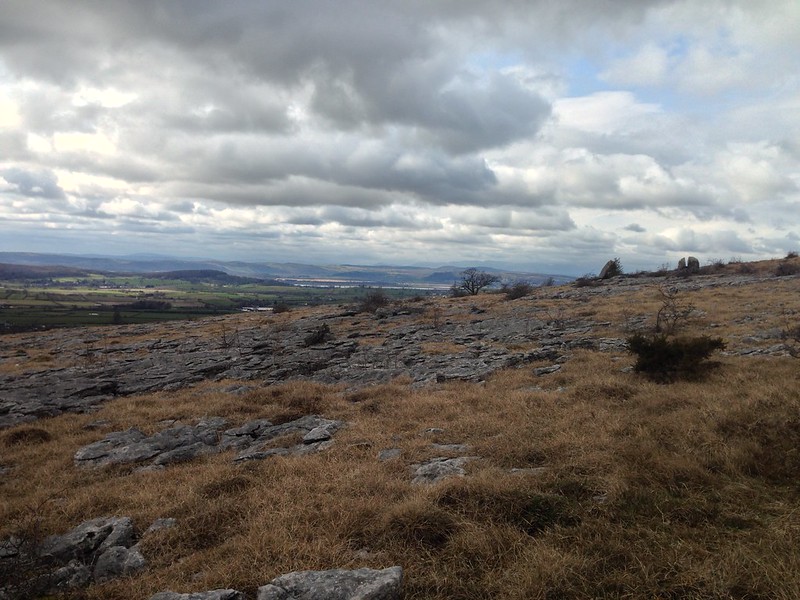
We made a late start, but whether that was due to sleeping-in, board game-playing, poor weather, general indolence or a combination of those factors, I’ve already forgotten.
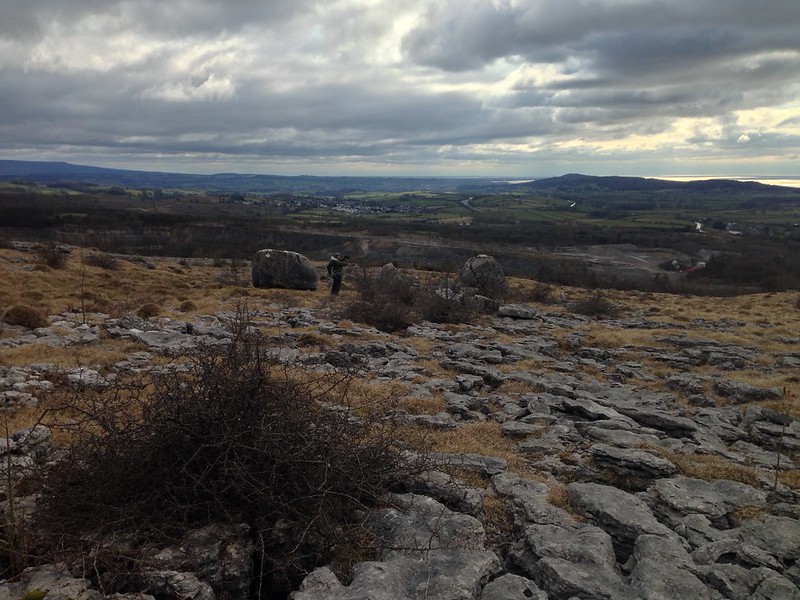
What I shan’t forgot is how unseasonably cold it was. The wind was bitter and I was woefully underdressed. I ended up borrowing a hat from TBH who took pity on me and made do with her hood.
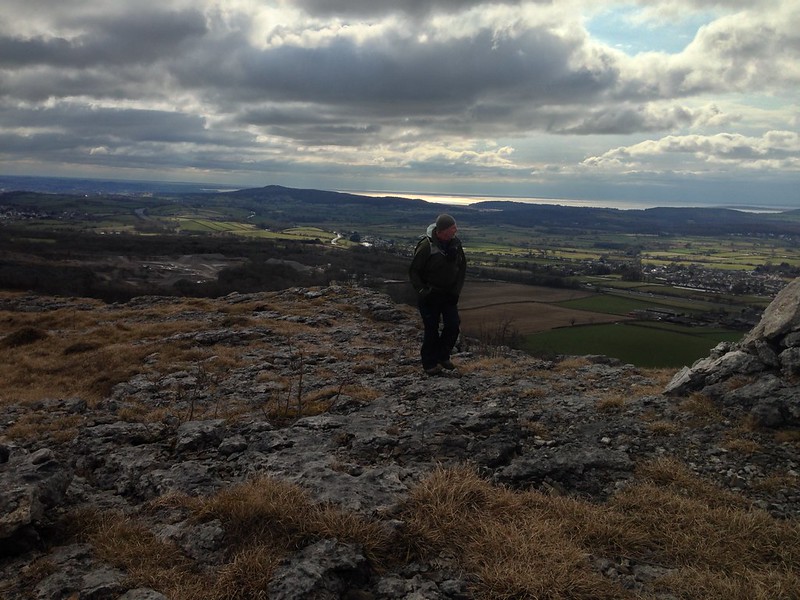
Even on a gloomy day, the views are vast and we took advantage of that fact by heading west first to then follow the limestone edge up to the top.
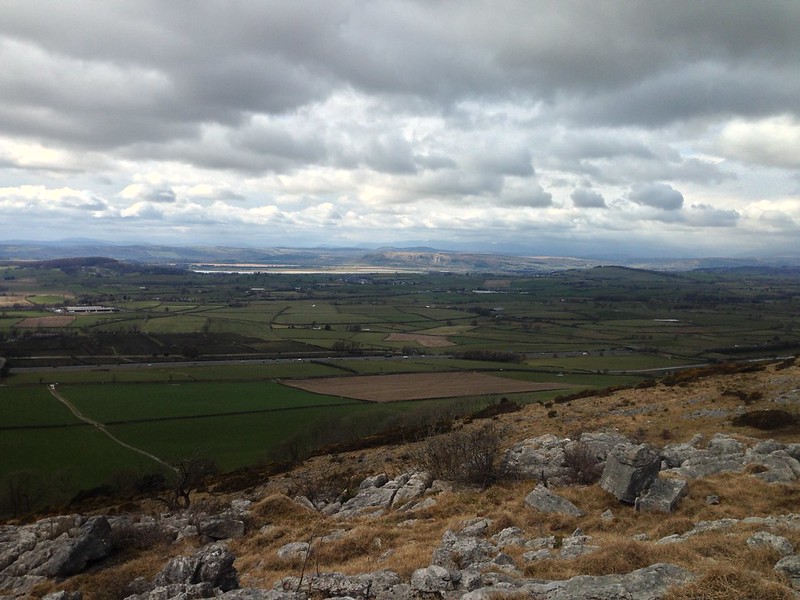
Looking toward Whitbarrow and the Kent Estuary.
Burnside uses the Sterne quote as an epigraph at the start of his book, which I suppose serves as fair warning that this memoir of a sort, is brim full of digressions. Since I finished ‘I Put a Spell on You’, I’ve been reading Graham Hoyland’s ‘Walking Through Spring’ an account of a walk from the Dorset Coast to Gretna Green all taking place between the Spring Equinox and the Summer Solstice. The full quote from Sterne, which is taken from ‘The Life and Opinions of Tristram Shandy, Gentleman’ is:
“Digressions, incontestably, are the sunshine;—they are the life, the soul of reading;—take them out of this book for instance,—you might as well take the book along with them;”
Which is undeniably true of Sterne’s great novel. It also applies to ‘Walking Through Spring’, which is very enjoyable but which sometimes feels like it is less about the walk than a patchwork of the research sparked off by each location or wildlife encounter along the way. Hoyland is a fan of W.G.Sebald so this wide-ranging style is perhaps no surprise. I should say however, that I’m enjoying ‘Walking Through Spring’ whereas I was completely underwhelmed by ‘The Rings of Saturn’. Perhaps I should give it another go.

Enjoying the view.
This very digressive style of writing about a walk at the very least avoids the ‘I went through the gate and over a stile. It rained. I had ham sandwiches for my lunch.’ blow-by-blow account of a walk which some authors too often descend to. That was one of the many topics we discussed on one of our walks over the Easter weekend and maybe that’s another thing which Hoyland captures – the way that the steady, slow pace of walking allows for wide-ranging conversations and for people to get to know each other well. (He is walking with his partner and also often with friends and relatives).

Following the edge.
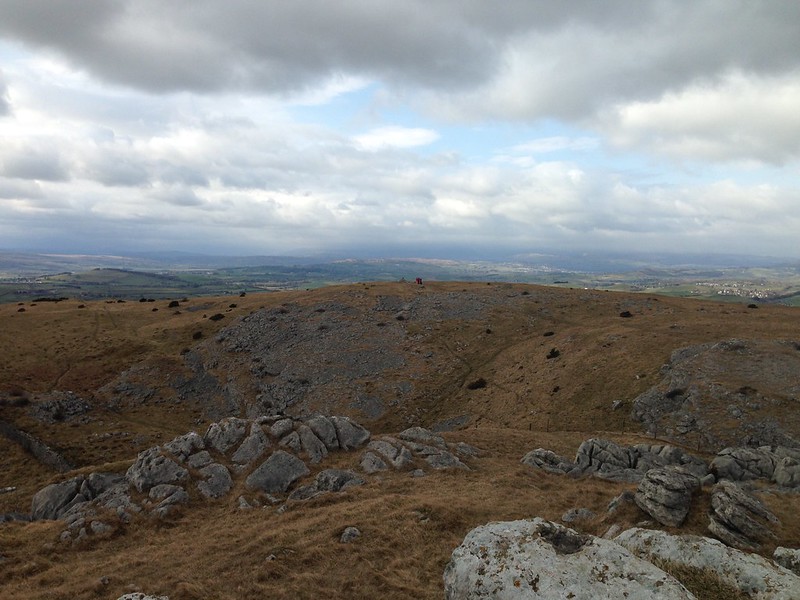
I’ve always called this hill Farleton Fell. The National Trust, who own the land, have it as Holmepark Fell. The Ordnance Survey have both of those names, as well as Newbiggin Crags and Farleton Knott which seems to be attached to the slightly lower top which lies to the North of the main summit and is seen in the photo above.
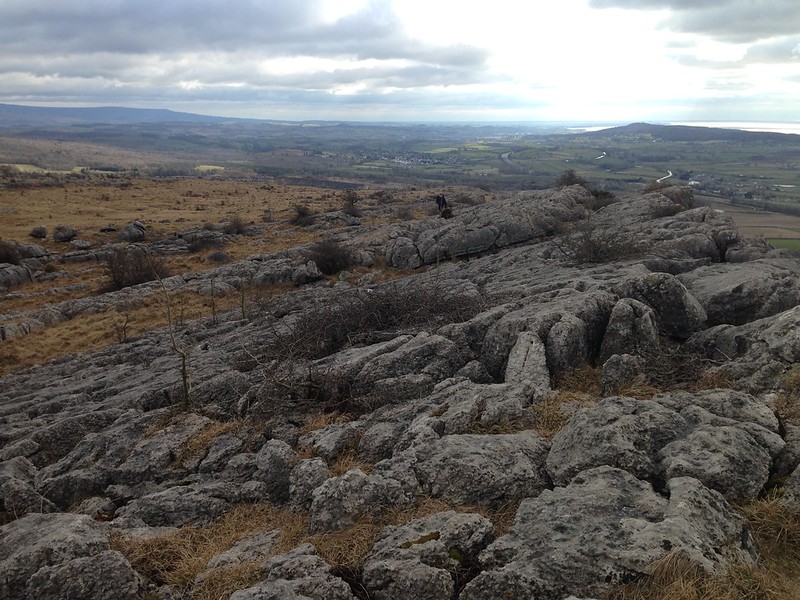
Looking back along the edge to Clougha Pike, Morecambe Bay and Warton Crag.
At the top we hunkered down behind the crags, following the example of small group of cows which were using the same shelter from the wind, and enjoyed the views for a while.
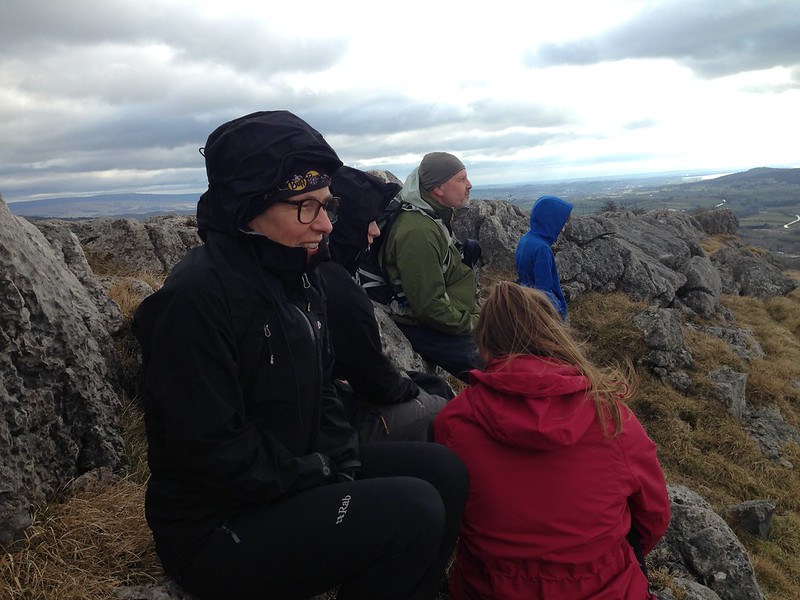
Andy was insistent that we should go over to Farleton Knott, and he was absolutely right because that gave a great view back to the limestone crags and also, apparently, if you went far enough over, down to the M6 and Junction 36, which he was inexplicably excited about. I decided to forgo that particular pleasure.

Unfortunately, Little S had fallen on the limestone pavement and skinned his knees, even through his trousers, so we took the most direct route back to where the cars were parked on the Clawthorpe Fell Road.
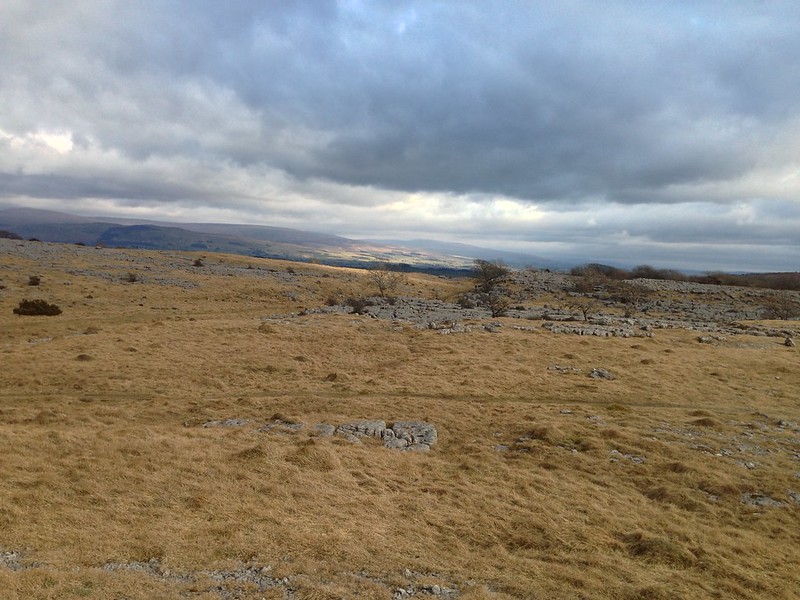
Our route crossed several more areas of limestone pavement and Andy and I were both trying to catch with our cameras the fleeting bursts of sunshine as they passed over the rocks. I wasn’t anywhere near quick enough.
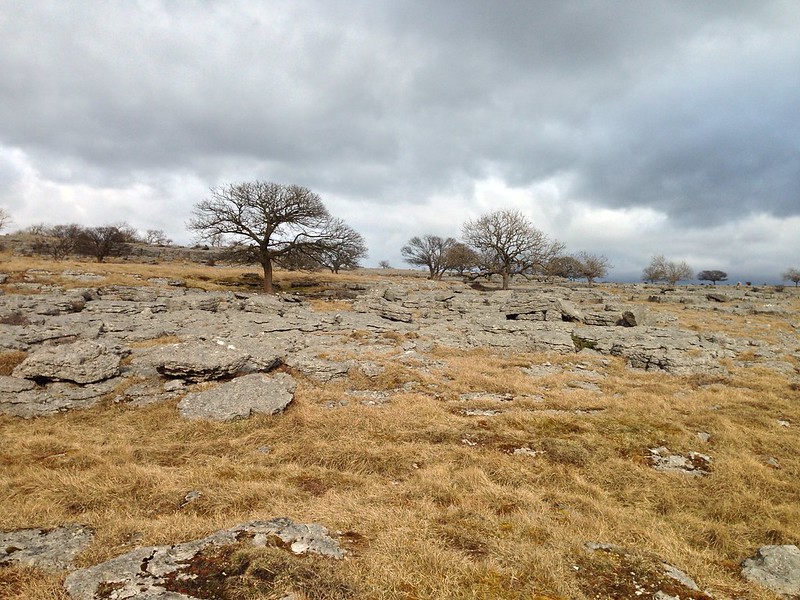
I find maps, old or new, endlessly fascinating. You can find the Robert Morden map here. It’s interesting to see what has been included and what left out. It’s no surprise that Silverdale is not there, in 1695, and that Warton is there. The spellings are interesting too: Armside Toure, Helvillin Hill; which is not as big as Farleto Knothill incidentally. It was Robert Morden who published, in 1672, a pack of cards each of which showed a map of one of the counties of England and Wales.

I imagine original 1672 cards are hard to come by, but in 1972 facsimile sets were produced. Over the weekend we played lots of games, though I think it’s fair to say that King Domino was the most popular. I was grateful to TJS though for reminding me how much fun can be had with a few friends and a pack of cards. He introduced us to a game I’ve never played before, but with incredibly complicated variant rules which he remembered in stages as we played and which had me pretty much crying with laughter as had repeatedly said: “Oh, and another thing…”
